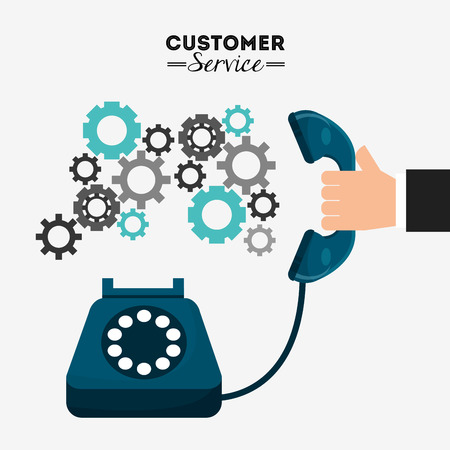Understanding Customer Discovery
Customer discovery is a core step for any startup aiming to succeed in the American market. It’s all about figuring out if your business idea really solves a problem that people care about. Before investing time and money, you want to make sure there’s actually demand for your product or service.
What Is Customer Discovery?
Customer discovery means talking directly with your potential customers to understand their needs, pain points, and behaviors. It’s not just about confirming what you think; it’s about learning what your target market actually wants. In the US, where customer preferences can be diverse and trends change quickly, this process is even more crucial.
Why Is Customer Discovery Important?
| Reason | Description |
|---|---|
| Avoids Costly Mistakes | You won’t waste resources building something nobody wants. |
| Builds Confidence | You gain real feedback from real people before launching. |
| Shapes Your Solution | Your product evolves based on actual customer needs, not assumptions. |
| Makes Fundraising Easier | Investors love to see startups with evidence that people want their solution. |
Foundational Principles of Customer Discovery in the US Market
- Start with Open-Minded Conversations: Avoid pitching your idea—listen more than you talk.
- Diversity Matters: The American market includes people from many backgrounds. Try to include a variety of voices in your interviews.
- Validate with Real Data: Don’t rely on gut feelings; use direct quotes, observations, and patterns from your interviews as evidence.
- Pilot Fast, Learn Fast: Americans value speed and innovation. Test small versions of your idea quickly to see how people react.
The Goal: Problem-Solution Fit
Your main objective during customer discovery is to confirm that the problem you want to solve really exists—and that people care enough about it to pay for a solution. This foundation will guide every next step of your startup journey in the US.
2. Identifying and Selecting Your Target Audience
Defining Your Ideal Customer
Before you start interviewing people, it’s crucial to know exactly who you want to talk to. In the U.S. market, your ideal customer could be defined by age, location, income level, lifestyle, or even their daily habits. Start by asking yourself: Who would benefit most from my product or service? Think about their challenges, needs, and goals.
Creating Detailed Customer Personas
To make this process easier, create customer personas—fictional representations of your ideal customers. These personas help you visualize who you are targeting and guide your interview questions. Here’s a simple way to build personas:
| Persona Name | Demographics | Pain Points | Goals | Lifestyle Traits |
|---|---|---|---|---|
| Busy Brenda | 35-44, Female, Urban, $70K/year | No time for meal prep | Wants healthy meals fast | Works full-time, values convenience |
| Techie Tom | 25-34, Male, Suburban, $90K/year | Keeps up with trends | Loves new gadgets | Lives alone, early adopter |
| Family-Focused Fran | 40-50, Female, Rural/Suburban, $60K/year | Wants safe products for kids | Saves money on household items | Married with children, shops in bulk |
Selecting Interviewees That Represent Your U.S. Market
Once you have your personas ready, look for real people who match these profiles. You can find them through social media groups, local community centers, or online forums like Reddit or Facebook Groups specific to your niche. It’s important to choose a diverse mix that reflects different backgrounds and experiences within your target audience. This helps you get a well-rounded view of the market.
Tips for Finding the Right People:
- Tapping Into Existing Networks: Ask friends or colleagues if they know anyone who fits your persona.
- Online Surveys: Use tools like SurveyMonkey or Google Forms to pre-screen potential interviewees.
- Community Events: Attend local meetups or virtual events related to your industry.
- Cultural Considerations: Be mindful of regional preferences and values unique to American consumers (e.g., convenience in urban areas vs. cost-saving in rural areas).
The better you identify and select your target audience, the more valuable insights you’ll gain from your interviews—helping you build products and services that truly resonate with American customers.

3. Crafting Effective Interview Questions
When it comes to customer discovery, the way you ask questions can make all the difference. You want your target audience to feel comfortable sharing their honest thoughts, even if its not what you expect to hear. This means designing open-ended, unbiased questions that dig deep into real needs and experiences.
Why Open-Ended Questions Matter
Open-ended questions encourage people to talk more about their feelings, habits, and challenges. Instead of getting a simple “yes” or “no,” youll uncover stories and details that reveal true customer pain points. For example, asking “How do you currently solve this problem?” gives you much richer information than “Do you have this problem?”
Examples: Closed vs. Open-Ended Questions
| Closed Question | Open-Ended Question |
|---|---|
| Do you use any apps for budgeting? | Can you walk me through how you manage your monthly budget? |
| Are you satisfied with your current solution? | What do you like and dislike about your current solution? |
| Would you buy a product like this? | If you had a tool that solved this issue, how would it fit into your daily routine? |
Avoid Leading and Biased Questions
Its easy to accidentally steer people toward the answers you want. Questions like “Dont you think this feature would be helpful?” put ideas in their heads and dont reflect their true opinions. Instead, keep questions neutral and let customers express themselves freely.
Tips for Unbiased Interview Questions
- Stay Neutral: Use language that doesnt suggest a “right” answer.
- Avoid Jargon: Use simple terms everyone understands.
- Let Silence Work: After asking a question, give the person time to think before jumping in.
- Follow Up Naturally: Ask “Can you tell me more about that?” or “Why is that important to you?”
Dive Deeper with Probing Questions
The first answer is just the start. Good interviewers gently probe further to get at the root of customer needs. If someone mentions a frustration, ask them when it happens most often or how they feel when it happens. These follow-up questions lead to real insights that help shape your product or service.
Probing Question Examples
- “Can you give me an example of when this happened recently?”
- “How did that experience make you feel?”
- “What did you do next?”
- “Was there anything about the solution that surprised you?”
Your Interview Question Checklist
| Best Practice | Description |
|---|---|
| Open-Ended Format | Encourages detailed answers and stories. |
| No Leading Language | Avoids suggesting answers. |
| No Jargon or Tech-Speak | Makes questions accessible to all participants. |
| Use Probing Follow-Ups | Digs deeper into initial responses. |
| Pace Yourself | Gives space for thoughtful answers; don’t rush. |
The right questions are key for learning what really matters to your customers. With these tips and examples, youll be ready to run interviews that reveal valuable insights—straight from the people who matter most.
4. Conducting Customer Interviews
Setting Up Effective Interviews
Before you jump into conversations with your target market, it’s important to plan how you’ll set up each interview. In the U.S., people appreciate clear communication and respect for their time. Here are some simple steps to get started:
| Step | What to Do | Why It Matters |
|---|---|---|
| 1. Identify Participants | Choose people who fit your customer profile. | You get more relevant feedback. |
| 2. Reach Out Professionally | Email or message with a short, polite request. | Shows respect for their time and builds trust. |
| 3. Schedule Conveniently | Let them pick the date and time that works best. | Makes them more willing to participate. |
| 4. Confirm Details | Send a reminder and agenda before the interview. | Keeps everyone on the same page. |
Building Rapport with Participants
Americans generally value friendliness and authenticity in conversations. Making participants feel comfortable helps you get honest insights. Try these culturally appropriate techniques:
- Start with Small Talk: Begin by asking about their day or sharing something about yourself. This breaks the ice.
- Be Respectful of Boundaries: If they seem hesitant, let them skip questions or move on without pressure.
- Use First Names: In most cases, it’s common in the U.S. to address people by their first names, unless they prefer otherwise.
- Show Appreciation: Thank them for their time at both the beginning and end of the interview.
Culturally Appropriate Communication Techniques
Your approach during interviews can impact the quality of information you receive. Here are tips tailored for American interviewees:
- Be Direct but Polite: Americans typically appreciate straightforward questions, as long as you remain courteous.
- Avoid Overly Formal Language: Keep your tone conversational and easygoing—too much formality can feel distant or stiff.
- Encourage Openness: Let participants know there are no right or wrong answers; you’re interested in their honest opinions.
- Acknowledge Their Input: Simple phrases like “That’s really helpful” or “I appreciate you sharing that” go a long way.
- Pace Yourself: Don’t rush through questions—leave room for participants to think and elaborate on their answers.
Sample Interview Opening (U.S.-Style)
Hello [First Name], thanks so much for taking the time to chat today! I’m excited to hear your thoughts. Before we dive in, is there anything you’d like to ask me about what we’ll be discussing?
5. Analyzing and Applying Insights
Turning Interview Data into Actionable Insights
After you’ve conducted your customer interviews, it’s time to make sense of all the information you’ve gathered. Here’s how you can break down what your target market is telling you and use those insights to shape your business decisions.
Step 1: Organize Your Notes
Start by sorting your interview notes into categories, like “pain points,” “desired features,” “current solutions,” or “buying triggers.” A simple table can help:
| Category | Example Responses |
|---|---|
| Pain Points | “I waste too much time tracking expenses.” |
| Desired Features | “I wish there was an app that scanned receipts automatically.” |
| Current Solutions | “Right now, I use spreadsheets.” |
| Buying Triggers | “If it saves me an hour a week, I’d pay for it.” |
Step 2: Identify Patterns and Trends
Look for repeated comments or recurring themes across different interviews. For example, if several people mention frustration with manual data entry, that’s a clear signal. Group similar feedback together to spot trends.
Step 3: Prioritize What Matters Most
You can’t fix everything at once. Rank the most common pain points and feature requests based on how often they come up and how strongly people feel about them. Focus on high-impact areas first.
Sample Priority Table:
| Pain Point/Feature | # of Mentions | Priority (High/Med/Low) |
|---|---|---|
| Manual data entry is tedious | 12 | High |
| Lack of mobile access | 6 | Medium |
| No integrations with bank accounts | 3 | Low |
Step 4: Integrate Insights into Strategy and Product Development
Translate what you’ve learned directly into your business plans. For example, if the top complaint is about manual data entry, make automating this process a primary feature in your product roadmap. If customers are price-sensitive, consider different pricing models or freemium options.
Tying It All Together With Your Team
Share these findings with your team using visuals like charts or tables so everyone is on the same page. Use real customer quotes to bring feedback to life and build empathy within your company. The more connected your team feels to actual customer needs, the better decisions youll make moving forward.


